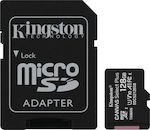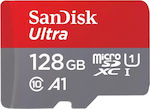This model is a small beast. Apart from its specialized use for programming, automation, etc., it can now function perfectly as a regular office multimedia desktop PC. With the Raspbian OS and a fast micro SD card, it runs smoothly and can do everything.
As someone who needed an Ubuntu server environment, it was difficult for me and still continues to be quite challenging to customize it to my needs.
With a proper case equipped with coolers and fans, and using a sufficient amount of thermal paste instead of thermal pads (type /opt/vc/bin/vcgencmd measure_temp in the terminal to measure temperature), the temperature did not exceed 47 degrees Celsius, even with an overclock of 1.75 GHz, in a room temperature of 20-22 degrees Celsius.
Definitely purchase the original Raspberry power supply (5V 3A) because all others are useless. The difference in micro SD card speed is also significant in this model.
In intense professional use for three months, it has not shown any issues, even with some risky experiments and serious connection errors.
Its power consumption reaches 7.7W-7.8W under load, and with overclocking (up to 2.0GHz), it reaches 10 watts.
The Wi-Fi, like in all similar devices (e.g. Intel Compute Stick), has limited range.
Overclocking the CPU and GPU will make a significant difference. With a case equipped with air cooling, you can easily reach the maximum settings of 2147 for the CPU and 750 for the GPU using the instructions provided in the following link:
https://magpi.raspberrypi.org/articles/how-to-overclock-raspberry-pi-4
If you experience lagging issues on YouTube with 1080p 60fps videos, try going to the preferences menu, Raspberry Pi configuration, performance, and increase the GPU memory (I have it set to 236 without any problems on the 4GB model).
If you have screen tearing issues (when scrolling), try reducing the refresh rate to less than 60Hz. Preferences, screen configuration, configure screens, HDMI1, frequency.
To add the language icon to the taskbar, right-click on it, select "Add/Remove Panel Items," click "Add," and choose "Keyboard Layout Handler." Then, add the desired language by right-clicking on the newly appeared icon (which should have a flag), selecting "Keyboard Layout Handler Settings," adding the language you want, unchecking "Keep system layouts," and checking "Do not reset existing options."
The keyboard shortcut for changing languages is Shift + Caps Lock, but it can be changed.
In the same way that we added the language icon, we can also add a temperature monitor and many other things.
The Raspberry Pi does not completely shut down when you perform a shutdown, and if the cooler has fans, they will continue to run. After shutdown, unplug it from the power outlet.
If you have issues with shutting down, type "sudo halt" in the terminal to close it.
For those who are not familiar with the Raspbian OS but want to create a mini PC for office and multimedia use, it will take you 1-2 hours to read guides on installing the operating system on the SD card. If you choose the version with pre-installed programs, you will have Chrome (Chromium) for browsing, Libre Office, and VLC player. It plays YouTube and Netflix easily in full HD, and movies on VLC in 4K. With 4GB of RAM, you can even have 15 open tabs on Chrome or perform other multitasking tasks. For those who are not aware, you will definitely need a micro HDMI to HDMI adapter, a micro SD card (it would be good to have one with at least 16GB but not more than 32GB because it can get confusing afterwards), a USB-C 5V 3A power supply, and a cooling case.
In general, you can build an ultra mini PC for less than 100 euros.















































